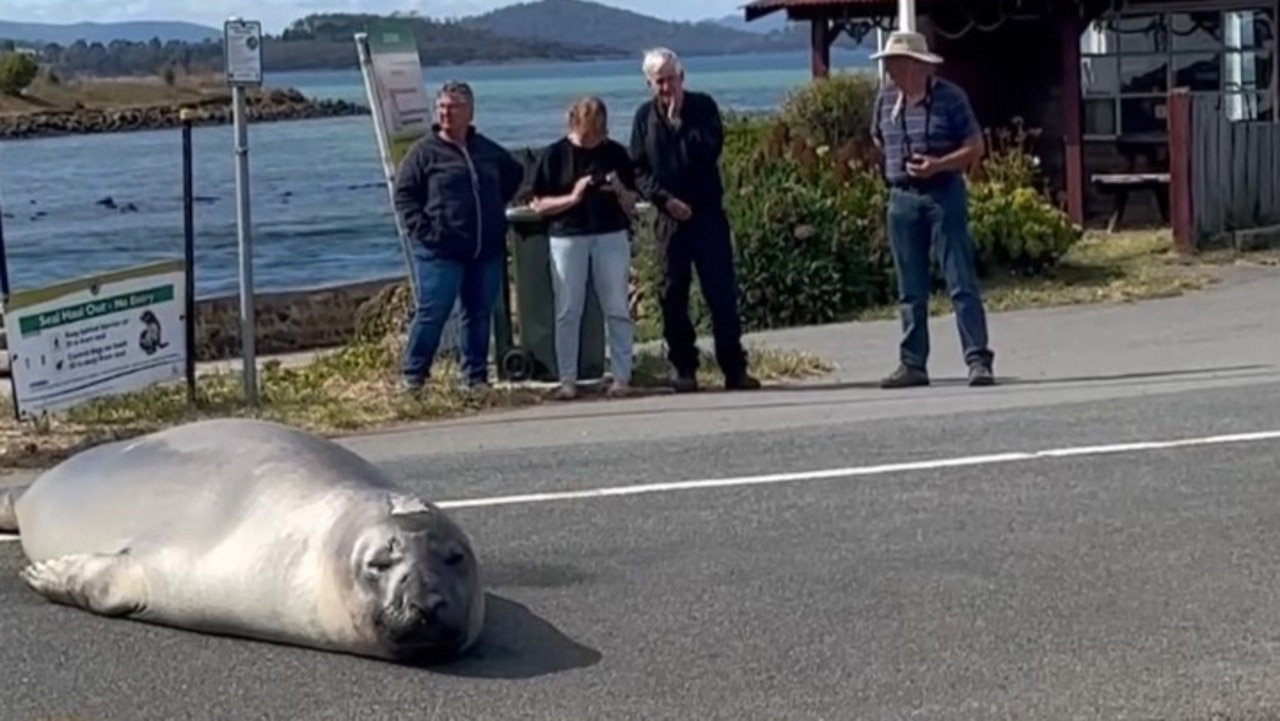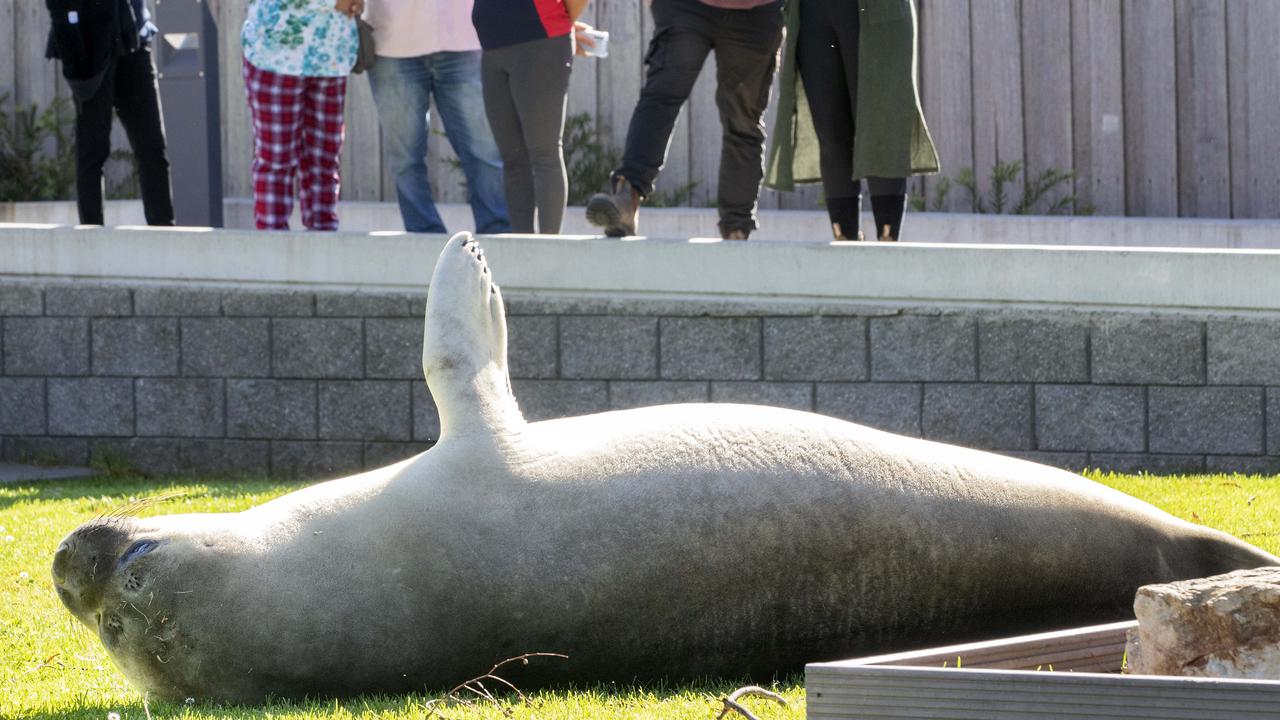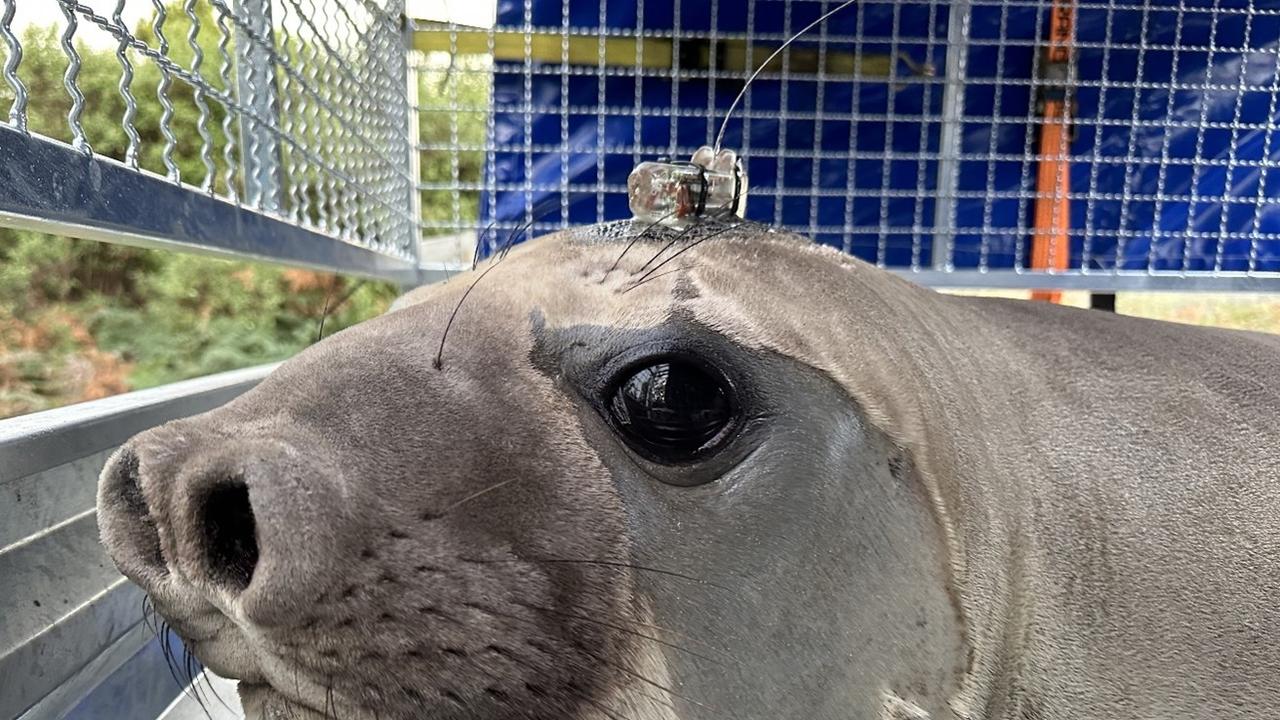‘Loving him to death’; why the world’s obsession with Neil the Seal is putting him in danger
His onshore antics have taken the world by storm, but could the love for Neil the Seal be killing him?
Tasmania’s fascination with the iconic southern elephant seal Neil may just be “loving him to death”, according to the state’s environmental authority.
The three-and-a-half-year-old “charismatic fella” Neil has taken the state, world and social media by storm with his onshore antics around Tasmania, including his most recent trip last year to southeast town Dunalley.
Neil currently weighs a princely 700kg at 3m long, but will soon grow to almost 5m and a mammoth 3.5tn.

For this reason, Marine Conservation Program (MCP) wildlife biologists from the Department of Natural Resources and Environment Tasmania (NRE Tasmania) said his fame could place him in danger.
“Neil’s become a real celebrity both in Tasmania and around the world, but that comes with its own issues to manage and our own responsibilities to help him,” said wildlife biologist Dr Kris Carlyon.
“We really ask that everybody doesn’t share his location if they come across him, both for their own safety and Neil’s.
“We need people to give him his space as well because he’s still a wild animal and can cause harm to himself and others, which is the last thing we want.”

Neil was born on the Tasman Peninsula in October 2020, meaning south-east Tasmania is where he will return twice a year to moult and to breed when he is older after foraging at sea.
Yet, it is these trips ashore that are a cause for concern, with an April 2023 expedition resulting in the MCP having to sedate and relocate Neil before fitting him with a satellite tracker.

“Sedation itself and moving Neil is a big operation that comes with significant risks and we really risk doing harm to Neil in that process,” Dr Carlyon said.
“They’ve got a really unique physiology, elephant seals, which means they don’t respond particularly well to sedation so that’s a last resort option.”




